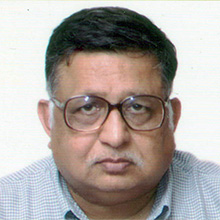 |
Land-sea correlation: Pitfalls and remediesAshok Kumar Singhvi To date, most land-sea or land-land correlations have been made, and are being made, by assuming a synchronicity of events, processes, and resulting changes on land and in the oceans. In such studies, it is implicitly assumed that, like marine or ice core records, terrestrial archives are created/accreted continuously, and that terrestrial sediment attributes behave in the same manner as those of the ocean or ice proxies. Based on this assumption, identical periodicities in the response of terrestrial systems have been inferred in numerous cases and major conclusions have been drawn. A further complication is the use of multi-proxy data with the simplistic assumption that all proxies respond to forcing in a synchronous manner and that the larger the number of proxies, the better. Direct dating of geological archives using modern chronometric methods have necessitated changes in this conventional wisdom. I shall present three chronometrically constrained case studies of dryland responses to monsoon changes:
These cases defy conventional wisdom and suggest the importance of determining temporal and spatial gradients and proxy responses based on robust chronologies. The need now is to more completely understand proxies by determining their thresholds, response styles, and timescales by establishing sound chronologies. Blending field evidence with chronometry is essential, along with recognition of the nature of events being dated by a particular method. This information will be needed for proper land use-landcover planning and for climate modeling under anticipated environmental change scenarios. A powerful yet simple and analytical approach to this problem is one of system dynamics that explicitly includes feedbacks, delays, and response types. Such approaches will be crucial for paleoscience to truly serve as a compass for future Earth. Note: Video unavailable for this plenary Ashok Kumar Singhvi has a PhD in nuclear physics, after which he joined the Geosciences group at the Physical Research Laboratory, India, where he developed a luminescence dating program. He was amongst the early entrants to this field and has contributed to its methodological development and its various applications, including the dating of deserts, which he pioneered. Other new applications he developed relate to the dating of coastal deposits, pedogenic carbonates, glacial ice, fulgurites, termites, and several others. He has worked in numerous deserts of the world and his studies on deserts have changed some of the conventional concepts about their response to climate, e.g. that the expansion and contraction of deserts was not synchronous. He has extensively contributed to studies on the Indian Quaternary and has provided first order chronometry for most of the Indian surface. He has authored about 200 papers and edited/authored about 12 conference proceedings/books He has been a member of the PAGES SSC and the Science Program Committee of IYPE, and was co-leader of IGCP 349 and 413 on deserts, evolution and the monsoon. Singhvi conceptualized the Indian invitation to PAGES-OSM in Goa. He is a Fellow of all the Indian science academies, the Geological Society of London, and the Third World Academy of Sciences. The Geological Society of America awarded him the Farouk El Baz Prize for his contributions to desert research and he has received several Indian recognitions as well. |
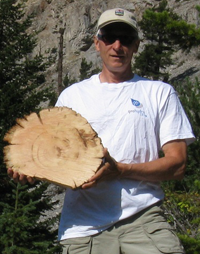 |
Abstract: Extending baseline hydrology from decades to centuries: Implications for water resource engineeringDave Sauchyn, Jeannine St. Jacques, Suzan Lapp, Cesar Perez-Valdivia and Jessica Vanstone Standard practices in water resource management and engineering assume a certain reliability of water supplies and stationarity of the hydrologic regime based on the analysis of hydrometric data. Paleohydrology and climate modeling undermine these assumptions by revealing scales and extremes of hydroclimatic variability outside the scope of instrumental records. Generally, professional planners and hydrological engineers regard the tangible evidence from climate proxies with less skepticism than model projections and thus paleoclimate reconstructions are a gateway for introducing practitioners to concepts of climate variability and change. Tree rings are particularly familiar. The tree-ring reconstruction of annual and seasonal water levels is based on the correlation between watershed wetness (water stored in plants and soil) and runoff. However, in western Canada cold weather processes, including snow accumulation and melt, glacier runoff and frozen soils, dominate the hydrology. We are challenged to capture this cold season hydroclimate signal using biological proxies. This talk explores attempts to improve the tree-ring reconstruction of streamflow that is produced primarily by snowmelt. We also describe applications of paleohydrology to regional climate adaptation in Canada’s western interior, where water is limiting ecologically and economically, and recent temperature trends, notably higher winter temperatures, are mostly favorable circumstances. Less favorable and more challenging consequences of regional climate change are shifts in precipitation and surface water supplies among seasons, years and decades. While adjustments to water practices, polices and structures to manage high-frequency variability in hydroclimate are familiar and feasible, novel adaptive strategies are required to address hydroclimate trends and decadal variability. The recognition and analysis of this low-frequency variability is important for our understanding of the regional climate regime, and for water resource planning and management for infrequent events, specifically sustained drought. View the video of the lecture on YouTube Dr. Dave Sauchyn is Research Professor at the Prairie Adaptation Research Collaborative (PARC) at the University of Regina. His research expertise is the climate and hydrology of the past millennium in Canada’s western interior and how knowledge of the past can inform scenarios of future climate and water supplies. Dave has been an invited expert witness on climate change in the Canadian Senate and House of Commons, and at forums hosted by provincial premiers and environment ministers.Dave is currently co-directing a five-year study of vulnerability to climate extremes in Chile, Argentina, Colombia, Brazil and the Canadian Prairies. He is senior editor and co-author of the book The New Normal: The Canadian Plains in a Changing Climate published in 2010. |
 |
Abstract: Rivers & Deltas in the AnthropoceneJames P.M. Syvitski, CSDMS Integration Facility, INSTAAR, U. Colorado—Boulder, CO, USA For over 2 decades, PAGES has been putting key global environmental parameters and trends into context with scientific underpinning. What has the earth experienced in its past in terms of CO2, surface temperature, sea level rise, sea ice extent, behavior of glaciers and ice sheets, forest cover, and so on? Just how resilient IS our planet? Research on global sustainability needs the context that PAGES continues to provide and is necessary within the IGBP and IPCC communities. However the scientific challenges facing PAGES scientists are not be underestimated as they employ proxy data from the Holocene, calibrated with observations from the modern Anthropocene — a time when the human species had a major impact on the Earth’s surface. Although physics remain physics, humans have intervened against the force of gravity, decelerated and accelerated natural processes, focused energy, altered or destroyed ecosystems, and altered the earth’s climatology. Using the present as a key to the past must proceed with this knowledge. My contribution is to understand and predict the global delivery of water and sediment to the coastal ocean and with particular reference to deltas. What is the state of the art in predicting these fluxes through the Holocene before and after the human footprint was large? Holocene river flow was a simple balance of precipitation, evapotranspiration and runoff, while accounting for the transient storage terms of groundwater pools, lake levels, snow and ice balance. Climate therefore was the major driver of Holocene floodplains and deltas. During the Anthropocene in contrast, humans changed river systems into unnatural conduits of water, sediment, carbon, nutrients and pollutants. Today we significantly store freshwater in reservoirs, changing the timing and nature of flooding. We have built great canals, straitened rivers, constrained channels with stop-banks and levees, diverted water from one drainage basin to another, substituted irrigation canals for distributary channels, and pulled large amounts water out of groundwater pools. Deforestation, mining and agriculture has introduced much fresh sediment into these waterways; fluvial sediment loads doubled on average, and deltas rapidly grew during the early Anthropocene. Subsequently we have built a major dam (>15 m in height) every day for the last 110 years, on average, sequestering hundreds of GT of sediment and carbon in reservoirs and greatly limiting the transport of sediment to the coast. Today deltas are subsiding at rates four times larger than the sea level is rising, on average; with subsurface mining (oil, gas or groundwater) being the main culprit. Coastal retreat has accelerated from m/y to km/y; saltwater intrusion has turned soils saline. The PAGES community can collectively help us to understand the W5 (what, where, when, who, why) on how humans created the Anthropocene. Furthermore PAGES can place this global footprint of humans into a context where we can begin to develop effective policies and protocols for supporting global sustainability. View the video of the lecture on YouTube Professor James P.M. Syvitski received a Ph.D. at U British Columbia in 1978, where he developed a quantitative understanding of particle dynamics across the land-sea boundary. He has held a variety of appointments within Canadian universities (1978-95) and was a Senior Research Scientist within the Geological Survey of Canada and the Bedford Institute of Oceanography (1981-95). James served as Director of INSTAAR – a U Colorado - Boulder Earth and Environmental Systems Institute from 1995-2007, and presently holds CU faculty appointments in Geological Sciences, Applied Mathematics, Atmosphere & Ocean Sciences, Hydrological Sciences, and Geophysics. Professor Syvitski is presently Executive Director of CSDMS— Community Surface Dynamics Modeling System, an international effort to develop, support, and disseminate integrated software modules to the broader Geoscience community. James is also Chair of the International Geosphere-Biosphere Programme that provides essential scientific leadership and knowledge of the Earth system to help guide society onto a sustainable pathway during rapid global change. Professor Syvitski received the 2009 Royal Society of Canada, Huntsman Medal for Outstanding Achievements in Marine Science, and is a Fellow of the American Geophysical Union. |
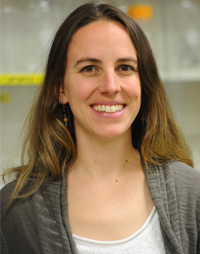 |
Abstract: Indo-Pacific climate during the Common Era: New perspectives from land and seaDr. Jessica Tierney, Woods Hole Oceanographic Institution, Cape Cod, Massachusetts, USA Climate variability in the Indian Ocean/Indo-Pacific Warm Pool - the deep convective core of tropical atmospheric circulation exerts enormous influence on patterns of rainfall in Indian Ocean Rim countries. While mechanisms driving interannual variability e.g., El Niño are relatively well-understood, those responsible for lower-frequency modulations of rainfall are not, in part because they cannot be studied using the instrumental record alone. Paleoclimate evidence of recent climatic change extends the instrumental record and thus allows for study of these important lower-frequency climate dynamics. However, a clear picture of Indo-Pacific climate during the Common Era is only just now emerging from still-sparse proxy networks. This talk will present several new proxy syntheses of last millennium Indo-Pacific climate, including 1) a synthesis of hydroclimate in coastal East Africa and 2) a synthesis of sea-surface temperatures in the Indian and western Pacific Oceans, compiled as part of the PAGES Ocean2K project, a subsidiary of the global PAGES2K effort. Both products yield fundamental insights into the agency of the Indian vs. Pacific ocean in driving regional decadal-to-centennial scale rainfall, improving our knowledge of internal variability in the tropical climate system as well as its response to external forcings. View the video of the lecture on YouTube Dr. Jessica Tierney is an Assistant Scientist at Woods Hole Oceanographic Institution in Cape Cod, Massachusetts, USA. She received a PhD. in Geology from Brown University and was a NOAA/UCAR Climate and Global Change Postdoctoral Fellow at Lamont-Doherty Earth Observatory. Her research focuses on tropical climate dynamics and paleoclimate, as well as the application of stable isotopes and molecular proxies towards paleoclimatic reconstruction. |
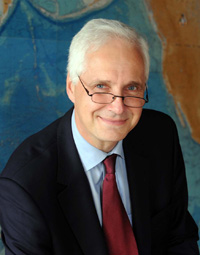 |
Abstract: Abrupt or not abrupt? - Tipping points in biogeophysicsMartin Claussen is Professor of Meteorology at the Meteorological Institute, University Hamburg, and Director at the Max Planck Institute for Meteorology, Hamburg, Germany Large-scale changes in climate and vegetation that appear to be abrupt in comparison with external forcing frequently occurred in the past. Such changes are interesting from the dynamical systems point of view because they could come as a surprise: Even if the change in the forcing is known, the onset of the resulting climate and vegetation change cannot precisely be predicted. Furthermore, abrupt changes are of high socio-economic relevance, if they occur ‘so rapidly and unexpectedly that human and natural systems have difficulties adapting to it’. An illustrative example from the Holocene is the abrupt onset and, at least regionally, abrupt termination of the African Humid Period which is associated with large changes in the Saharan ecosystems and human cultures. From climate simulations and geological data the picture of an abrupt termination of the African Humid Period and abrupt expansion of the Sahara around 5,500 years ago emerged, and the Sahara was viewed as one of the “tipping elements” of the Earth system. More recent data and climate modeling lead to a critical reassessment. Here, a more comprehensive view is proposed. It is shown that abrupt change can result from a strong biogeophysical feedback or, alternatively, from intrinsic threshold behaviour of hydrological systems and ecosystems. Strong feedback in one region can lead to ‘induced tipping’ in other, seemingly stable regions. Finally, biodiversity affects the strength of biogeophysical feedback. In conclusion, the nature of abrupt change cannot be determined from statistical analysis of palaeo time series without knowledge of the underlying biogeophysical processes. View the video of the lecture on YouTube Martin Claussen is Professor of Meteorology at the Meteorological Institute, University Hamburg, and Director at the Max Planck Institute for Meteorology, Hamburg (Germany). His scientific expertise is meteorology, climate modeling, palaeo-climate modeling, and land surface – atmosphere interaction. He is interested in analyzing feedback processes in the climate system in present and past climate. He was one of the first to couple a dynamics vegetation model to an atmospheric circulation model to explore the role of vegetation – atmosphere interaction in the climate system. Claussen is member of the IGBP-SC. He has served as chair and vice chair of the German Meteorological Society, and as member of the Senate of the German Research Foundation. Claussen has received the Milutin Milankovic Medal, European Geosciences Union (2005), and he is member of several academies including the German (National) Academy of Sciences, Leopoldina, and the Academia Europaea. For more information, visit Dr. Claussen's web page. |
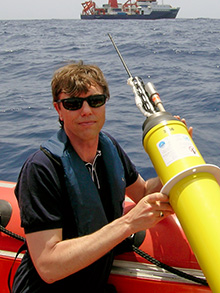 |
Abstract: Selected topics on ocean dynamics in the wider context of climate variability and global sustainabilityProfessor Dr. Martin Visbeck, Chair in Physical Oceanography, Helmholtz-Zentrum für Ozeanforschung Kiel (GEOMAR) and Kiel University, Germany The mean and time-variable ocean circulation plays an essential role in the regional redistribution of heat, freshwater, carbon, oxygen, and nutrients. On the largest scale, arguably, the global overturning circulations regulate many aspects of the global climate. New observations in the North Atlantic Subpolar Subtropical gyre demonstrate the inherent variability of the Atlantic Meridional Overturning Circulation (AMOC) and the challenge toward fully observing and understanding its dynamics. In the Southern Hemisphere the cross-Antarctic Circumpolar Current flows are thought to play a substantial role in the ocean’s uptake of heat and carbon. Recent observations and model studies suggest that local eddy dynamics need to be taken into account to estimate meridional fluxes. Finally wind driven circulation in the subtropical regions plays a fundamental role in observed changes in subpolar freshwater budgets and regional subtropical sea level trends. All these cases demonstrate that the rich spectrum of ocean dynamics needs to be considered when estimating changes in regional ocean heat uptake, CO2 budgets, and possibly even more for estimates of future ocean acidification, freshwater budgets and associated changes in subpolar stratification. The complexity of the challenge demands large-scale coordination of ocean observations, research activities, and efforts to inform the public on sustainability issues in the marine realm. View the video of the lecture on YouTube Professor Visbeck’s current research is concerned with integrated marine sciences and in particular with ocean and climate variability and change with an emphasis on the circulation of the Subpolar North Atlantic and Subtropical Oxygen Minimum Zones. For his research he makes use of research vessel based expeditions but is increasingly using modern robotic platforms including profiling floats and gliders, and the development of ocean observatories for long-term observations. He is the co-chair of the World Climate Research Programs Project CLIVAR (Climate Variability and Predictability), which facilitates global climate research in the atmosphere and ocean. He was the chair of the organizing committee of the World Meteorological Organization’s Third World Climate Conference in 2009, which called for the development of the Global Framework for Climate Services (GFCS). He was a member of the ICSU transition team that has developed the new global change research project: FUTURE EARTH Research for Global Sustainability. |
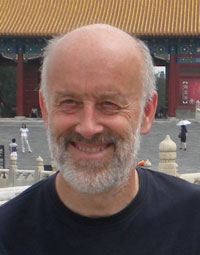 |
Abstract: Food economics in (pre-)historical timesProf. Martin Jones, Department of Archaeology, University of Cambridge Contemporary food economics lean heavily towards the food species that currently dominate our food chain, in particular three grass species that equate with over half the biological energy moving through that chain. This economic emphasis upon the ‘big three’ - bread wheat, rice and maize - is mirrored by a corresponding emphasis on scientific research effort and crop breeding. The three species consequently figure centrally in discussions of future food security and climate change. In the deeper, millennial history of agriculture, their predominance in this scale is relatively recent, largely post-dating the 17th century Columbian Exchange of Old and New World crops. For much of prehistory, they were consumed alongside a range of equally significant grain and tuber crops. Among these other food sources were taxa with ecological attributes quite different from the relatively demanding ‘big three’ of the modern world. By looking back in time through the archaeological record pf crop plant plants, it is possible to elucidate the evolutionary ecology of a range of hardier food sources that played a considerable role in environmental extremes in the past, and may consequently offer potential benefits in the environmental challenges of the future. In this presentation, I shall explore the archaeology of prehistoric energy foods, with particular reference to those taxa that exhibit ecological resilience in circumstances of seasonal and hydrological stress, in the context of changing cultural patterns and climatic histories. View the video of the lecture on YouTube Martin Jones has been Professor of Archaeological Science at Cambridge since 1990, where he leads a group researching the deep history of foodways and agriculture through a range of bio-archaeological and genetic methods. His two principal current research interests include the origins of modern food-sharing behavior, and the spread of agricultural resources in both directions across prehistoric Eurasia. Over the past five years he has worked with colleagues at the Chinese Academy of Social Sciences and PKU to study agricultural origins and spread from North China. Back in the UK, he has also chaired a number of panels involved with the promotion and resourcing of archaeological science for the NERC, AHRC and Wellcome Trust. His recent books include The Molecule Hunt: Archaeology and the Search for Ancient DNA and Feast: Why Humans Share Food. |
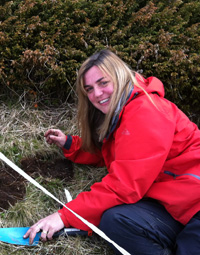 |
Abstract: Climate change, biodiversity and ecosystem service provision through time and spaceKathy Willis, Department of Zoology, University of Oxford UK, Traditionally, research to determine the impacts of climate change on biodiversity has tended to focus on direct species interactions. Much excellent work has been carried out for a whole range of plant and animal species to determine rates and directions of species movements in response to climate change and palaecological studies have provided many important insights into this work. More recently, however, the focus has shifted somewhat from attention on the individual species/communities, to the influence of climate change on the ecosystem services provided by biodiversity. These services, which provide the benefits that humans receive from the natural functioning of healthy ecosystems, are derived from ecosystem processes and functions (i.e. the physical, chemical and biological interactions between organisms and their environment) and are typically organized into four groups: supporting (e.g. nutrient cycling), regulating (e.g. erosion protection, carbon storage), provisioning (e.g. timber and fuel) and cultural services (MEA 2005). Many governments are now assessing the ecosystem services provided by their in-country biodiversity (e.g. UK NEA, 2011) and devising policies for their conservation and management. Achieving sustainable management of ecosystems, however, depends upon the availability of accurate information about the variation in ecosystem service provision across space and time (de Groot, 2010) and an understanding of responses of ecosystem components to drivers of change. What is becoming increasingly apparent from these assessments is that whilst there is considerable information and methodologies available to map a static picture of current ecosystem service provision, far less is known about variations through time and drivers of change. This talk will highlight, through examples, the huge potential of palaeoecological research in filling this important knowledge gap and providing information that is of direct relevance not only to the scientific community but to governments and habitat managers involved in local, regional and global landscape planning. View the video of the lecture on YouTube Professor Kathy Willis holds the Tasso Leventis Chair in Biodiversity in the department of Zoology, University of Oxford and is Director of the Biodiversity Institute, Oxford Martin School and head of the Long Term Ecology Laboratory. She has been involved with research and teaching in biodiversity, conservation and management for the past 20 years at both the Universities of Oxford and Cambridge. Scientific research is focused on the determination of biodiversity baselines and the ecological and evolutionary processes responsible for ecosystem variability, thresholds and resilience using both palaeoecological and contemporary ecological data. Recent research has ranged from developing a new proxy for detection of variability of UV-B flux through time to the development of web-based decision support tools to determine important regions for biodiversity, resilience and the ecosystem service value of landscapes outside of protected areas. Translation of biodiversity science into policy and management is another research focus. References: de Groot, R.S., Alkemade, R., Braat, L., Hein, L., Willemen, L., 2010. Challenges in integrating the concept of ecosystem services and values in landscape planning, management and decision making. Ecological Complexity 7, 260-272. |

